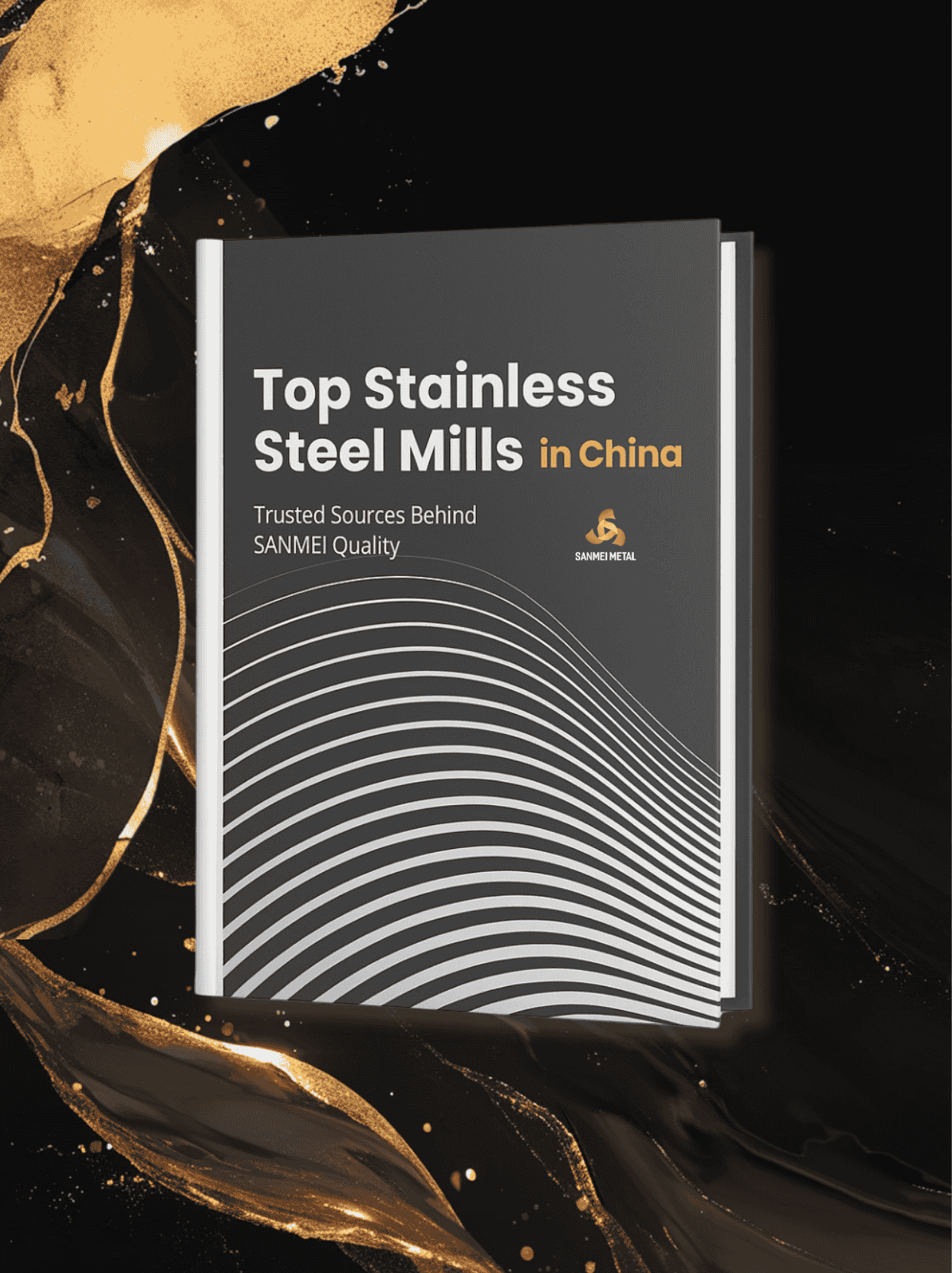
Get Your FREE Access: China’s #1 Steel Mill Dossier
Buyer-Oriented: Match mills by grade/finish/width-thickness/application
BAOWUTsingshanLiscoTisco


304L is equivalent to:
304L stainless steel's enhanced corrosion resistance and excellent weldability make it suitable for a wide range of industrial and commercial applications, especially those involving high temperatures and corrosive conditions.
Corrosion Resistance of 304L Stainless Steel
304L stainless steel has improved resistance to carbide precipitation, making it suitable for use in environments where intergranular corrosion is a concern.
Heat Resistance of 304L Stainless Steel
304L stainless steel is recommended for continuous use in corrosive environments between 425-860°C due to its resistance to carbide precipitation. It maintains good oxidation resistance up to 870°C for intermittent use and up to 925°C for continuous use.
Machinability of 304L Stainless Steel
Similar to 304 stainless steel, 304L has good machinability. It can be machined using conventional methods, with sharp cutting tools and sufficient cooling/lubrication to prevent work hardening and heat buildup.
Welding of 304L Stainless Steel
304L can be welded using all standard welding techniques. It exhibits excellent weldability without the need for post-weld annealing, making it ideal for applications requiring extensive welding.
Hot Working of 304L Stainless Steel
The hot working temperature range for 304L stainless steel is 1149-1260°C. Hot working processes should be followed by rapid cooling to ensure the desired mechanical properties are achieved.
Annealing of 304L Stainless Steel
Annealing 304L stainless steel involves heating it to 1010-1120°C, followed by rapid cooling. This process reduces internal stresses and improves corrosion resistance.
Application Limitations of 304L Stainless Steel
Due to its lower carbon content, 304L has slightly lower tensile and yield strength compared to 304. However, it is better suited for applications requiring extensive welding or exposure to corrosive environments where carbide precipitation is a concern.
Heat Treatment of 304L Stainless Steel
304L stainless steel cannot be hardened by heat treatment. Instead, it is often solution treated or annealed to enhance its mechanical properties and corrosion resistance.
| Physical Properties of 304/304L Stainless Steel | ||
| Property | Value | Unit |
| Density | 0.285 | lb/in³ |
| Modulus of Elasticity | 28 x 10⁶ | psi |
| Coefficient of Thermal Expansion (68-212°F) | 9.2 x 10⁻⁶ | /°F |
| Thermal Conductivity | 9.4 | Btu/ft·hr·°F |
| Specific Heat | 0.12 | Btu/lb·°F |
| Electrical Resistivity | 28.3 | Microohm-in |
| 304L Stainless Steel Mechanical Property | ||||
| Property | Yield Strength, min. (ksi) | Tensile Strength, min. (ksi) | Elongation, min. (%) | Hardness, max. (Rb) |
| 304L | 25 | 70 | 40 | 92 |
| Grade | C (Max) | Mn (Max) | Si (Max) | P (Max) | S (Max) | Cr (Max) | Ti (Max) | Nb (Max) | Fe (Max) |
| 441 | 0.03 | 1 | 1 | 0.04 | 0.015 | 17.5 - 18.5 | 0.10 - 0.60 | 0.3+3 - 1.00 | Balance |
304 is the standard austenitic stainless steel, with a carbon content of less than 0.08%. It has slightly lower corrosion resistance and strength compared to 304L.
304L is a low-carbon austenitic stainless steel, with a carbon content of less than 0.03%. It has higher corrosion resistance and better weldability than 304. 304L is more suitable for applications that require high corrosion resistance and good weldability.
304LV is an enhanced version of 304L. In addition to the characteristics of 304L, it has additional nitrogen (N) added to improve its strength, though this may slightly compromise its corrosion resistance.
304LV has higher yield strength and tensile strength than 304L, making it suitable for applications that require higher strength, such as high-pressure vessels.
However, the corrosion resistance of 304LV is slightly lower than 304L, so the choice should be based on the specific application environment.

Type | Width (mm) | Weight (MT) | Thickness (mm) | ||||
| 304L Coil | 1000, 1219, 1240, 1500 or Customized | 3-10 | 0.15-3.0 | ||||

| Type | Width (mm) | Length (mm) | Thickness (mm) | |||||||||
| 304L Sheets | 1000, 1219, 1240, 1500 or Customized | 2000, 2438, 2500, 3000, 3048 | 0.3-3.0 | |||||||||
We are committed to giving our customers the best and highest quality service to ensure our customers' satisfaction.









Certified by prestigious institutions and committed to adhering to international standards in every aspect.




Customer feedback is the most authentic reflection of a company's quality.
View more technical references from Sanmei Metal regarding stainless steel coils and stainless steel sheets.
Headquarters:
Creating Center, No.142, Yuhe Road, Lecong Town, Shunde District, Foshan City, Guangdong Province, China. 528315
Factory: Liyuan Logistics City, Chencun Town, Shunde District, Foshan City, Guangdong Province, China. 528313
Australia Local Support Base: (Yatala, QLD) – Coming 2026